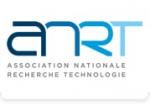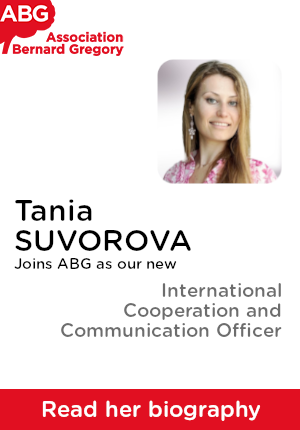Single-photon sources for quantum technologies
| ABG-134085 | Master internship | 4 months | 650 euros environ (gratification de stage) |
| 2025-10-29 |
- Physics
Employer organisation
Website :
The Institut FOTON is a research unit of the French National Centre for Scientific Research (CNRS) associated to University of Rennes 1 and the National Institute for Applied Sciences (INSA) of Rennes. FOTON is composed of three research teams: the “Optoelectronics, Heteroepitaxy and Materials” team, the “laser Dynamics, microwave photonics, Polarimetry, terahertz, imaging” team located in Rennes, and the “Photonic Systems” team located in Lannion. The two cities are located approximatively 170 km apart, in the province of Brittany, Western France. Photonic Systems team (~50 people) is involved in research on laser physics, and in particular on the experimental demonstration of new functionalities that could potentially contribute to overcoming the challenges related to sensors sensitivity, telecom capacity and guided optics (fibers and integrated photonics) in particular for sensing and nonlinear applications. The group has an established reputation in the area of laser physics and mid-IR integrated photonics. All the simulation and experimental (processing and optical characterizations) tools required for the project completion are available within the Photonic Systems Team in Lannion.
The successful candidate will carry out research in Lannion (France).
More information about FOTON can be found at: https://www.institut-foton.eu/.
Description
Context
On-demand single photons are desirable for enabling ideal quantum-secure communications. For this purpose – as well as for quantum sensing and quantum computation - many platforms are being developed, including semiconductor quantum dots, trapped ions and cold atoms. Single rare-earth ions (REIs) in solid-state materials are promising for on-demand single-photon emission thanks to their ease of fabrication and atom-like optical transitions: they can be optically excited and subsequently emit single photons, one at a time. At low temperature, certain REIs exhibit long spin coherence times that can be exploited to build quantum memories and network nodes in cryogenic conditions. Using the same rare-earth ion species and optical transitions for both single-photon generation and quantum memory would avoid the need for frequency conversion between the photon source and memory, thus simplifying the design and increasing the efficiency of quantum repeater protocols.
Recent experiments have demonstrated room-temperature single-photon emission from ytterbium- [1] and neodymium-doped [2] tapered optical fibers. Because their glass host matrix suppresses coherence at room temperature, these photons are not indistinguishable. While this a priori makes them unsuitable for high-efficiency quantum computations or repeater-based protocols, they can be useful for quantum random number generation, or for short-distance quantum key distribution schemes that do not require quantum interference (such as the BB84 protocol). Thus, these results are a promising step toward scalable and cryogenics-free quantum light sources, thus paving the way for reduced environmental footprint and engineering constraints of quantum devices.
In the near future, this research will focus on engineering a cavity to increase the REIs emission rate, thereby enabling future applications to operate at a higher speed, exploring different REIs, as well as implementing quantum applications. However, it is essential to first develop a reproducible, cost-efficient and reliable taper fabrication technique. The taper thickness involves a trade-off: it should be thin enough to allow isolation of REIs, but thick enough to maintain mechanical strength and minimize the risk of breakage.
The intern will benefit from a dynamic and collaborative research environment. The project is part of ongoing national (CIMAP Caen) and international (Japan, Latvia) collaborations, in connection with several funded research programs. The intern will work within an active research team including faculty members, postdoctoral researcher, PhD students, and research engineers, and will have access to the laboratory’s experimental facilities. Further information about the team’s research activities can be found on our website (https://www.institut-foton.eu/laser-visible-uv/).
Objectives
In this research internship project, the intern will:
● Learn to fabricate tapers using the flame-based process currently implemented in our lab, starting with standard SMF28 fibers.
● Build a new taper fabrication setup, selecting the most suitable heating method (flame, CO2 laser or ceramic oven) to minimize cracks or molten bubbles.
● Apply the acquired skills to fabricate tapers from doped fibers. Several tapers with various diameters will be fabricated.
● Characterize the obtained tapers using our imaging and HBT characterization setup, in order to determine the maximal diameter that allows single-photon emission while maintaining mechanical robustness.
● Determine the optimal diameter and associated fabrication parameters - stretching temperature and speed. The goal is to achieve reproducible single-ion isolation and consistent robust taper geometries.
● Establish a reliable protocol for taper fabrication that can be followed by other team members.
References
[1] Takezawa M. et al., "Room-temperature addressing of single rare-earth atoms in optical fiber", Phys. Rev. Appl. 20 044038 (2023)
[2] Shimizu K. et al., "Single-photon generation from a neodymium ion in optical fiber at room temperature", Appl. Phys. Lett. 124 081106 (2024)
Profile
Candidates should have good knowledge in the areas of optics, physics, as well as interest for experimental work. A previous experience in quantum optics or nanofiber manipulation would be greatly appreciated. Good interpersonal and communication skills in French or English are required.
Starting date
Vous avez déjà un compte ?
Nouvel utilisateur ?
Get ABG’s monthly newsletters including news, job offers, grants & fellowships and a selection of relevant events…
Discover our members
 ASNR - Autorité de sûreté nucléaire et de radioprotection - Siège
ASNR - Autorité de sûreté nucléaire et de radioprotection - Siège  MabDesign
MabDesign  ONERA - The French Aerospace Lab
ONERA - The French Aerospace Lab  Institut Sup'biotech de Paris
Institut Sup'biotech de Paris  CESI
CESI  TotalEnergies
TotalEnergies  ADEME
ADEME  SUEZ
SUEZ  ANRT
ANRT  Tecknowmetrix
Tecknowmetrix  PhDOOC
PhDOOC  Ifremer
Ifremer  Nokia Bell Labs France
Nokia Bell Labs France  Généthon
Généthon  Groupe AFNOR - Association française de normalisation
Groupe AFNOR - Association française de normalisation  Laboratoire National de Métrologie et d'Essais - LNE
Laboratoire National de Métrologie et d'Essais - LNE  MabDesign
MabDesign  Aérocentre, Pôle d'excellence régional
Aérocentre, Pôle d'excellence régional  CASDEN
CASDEN

